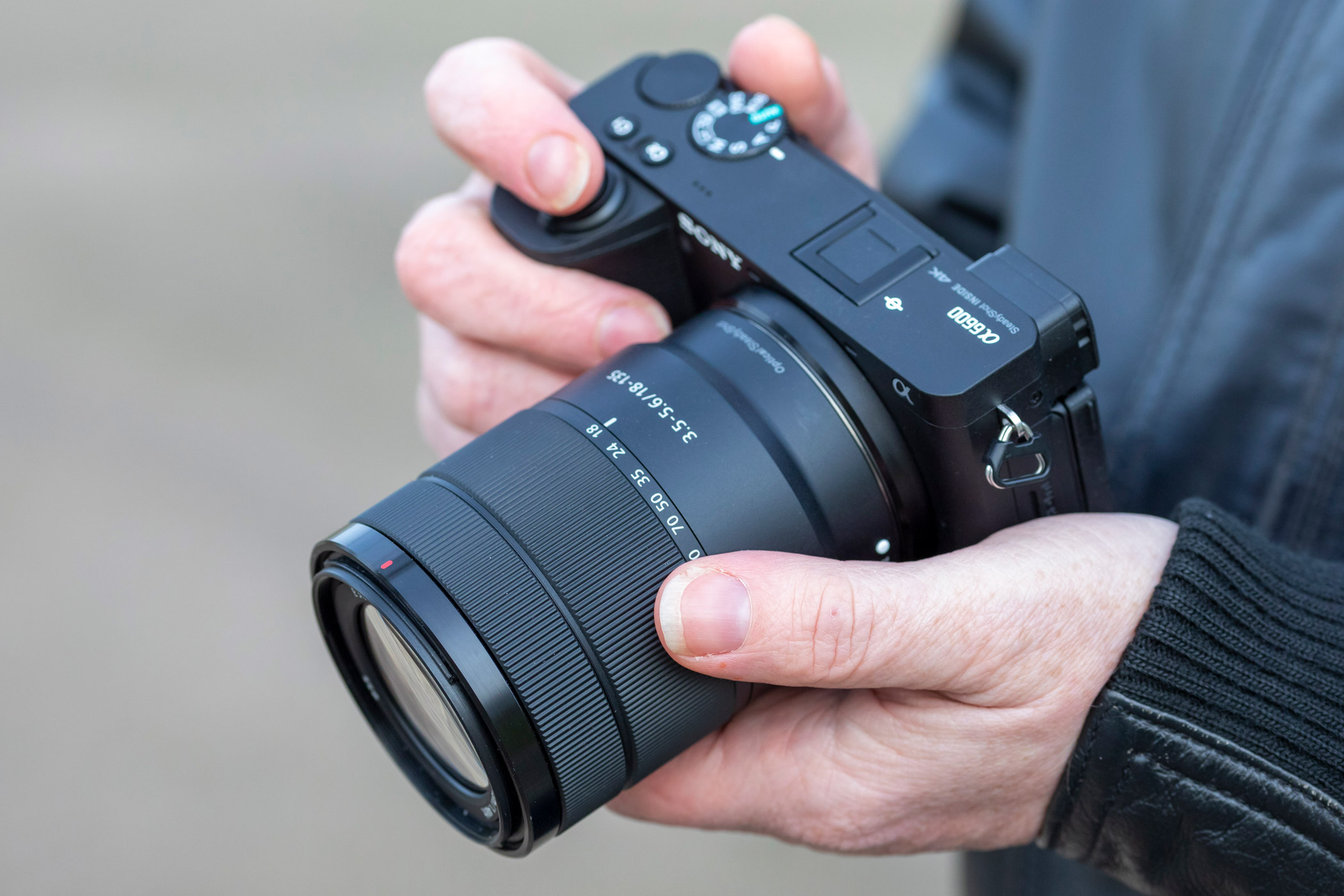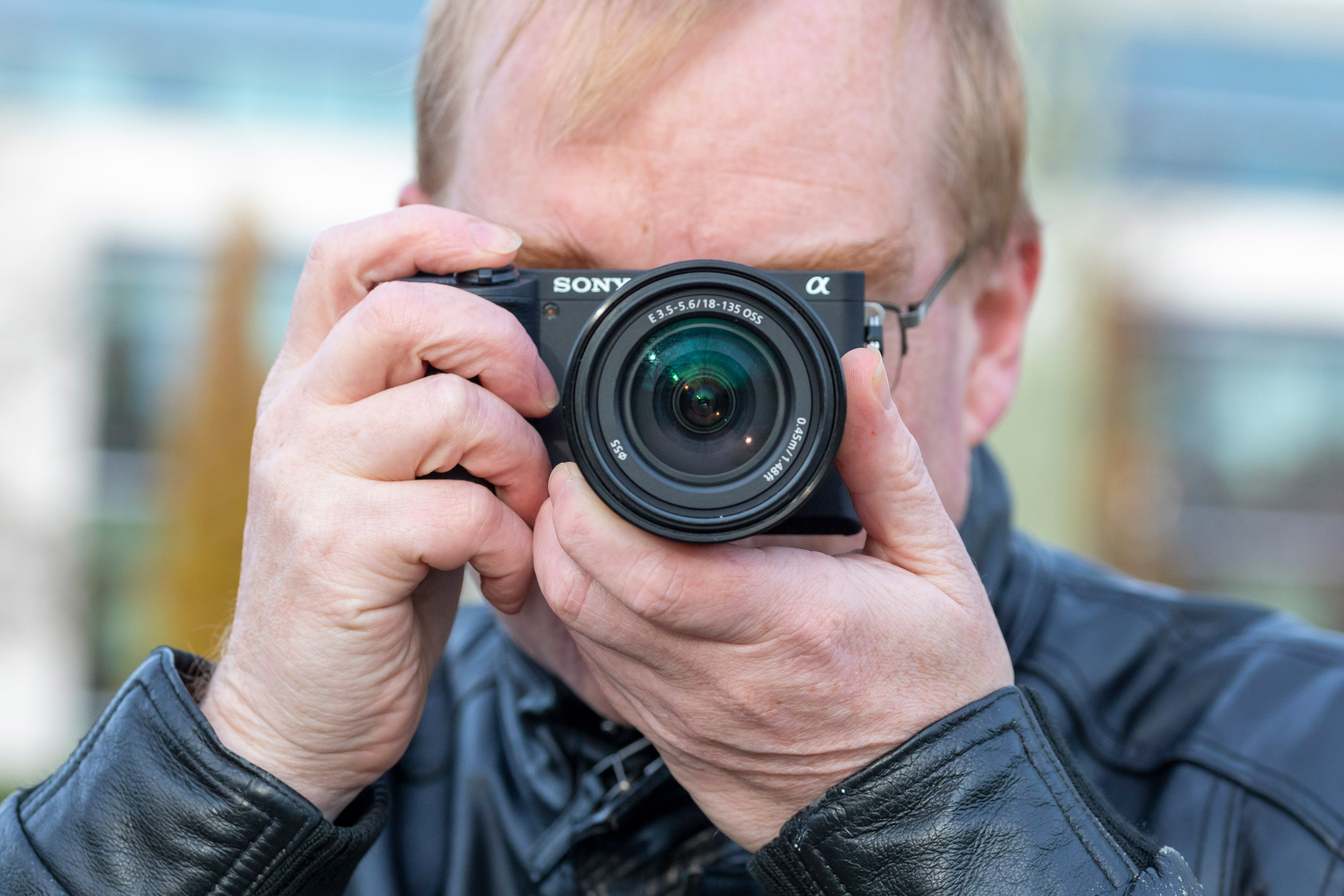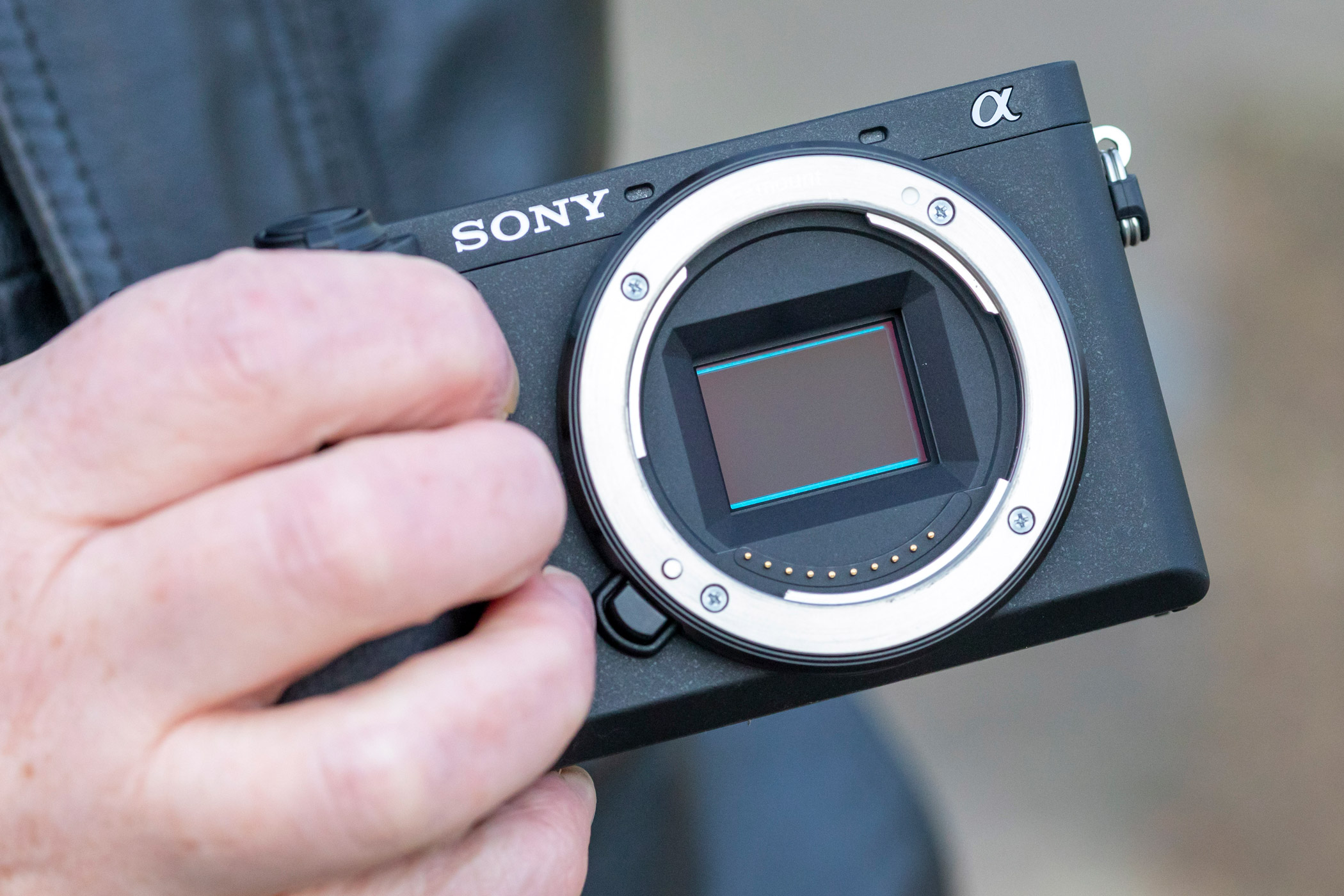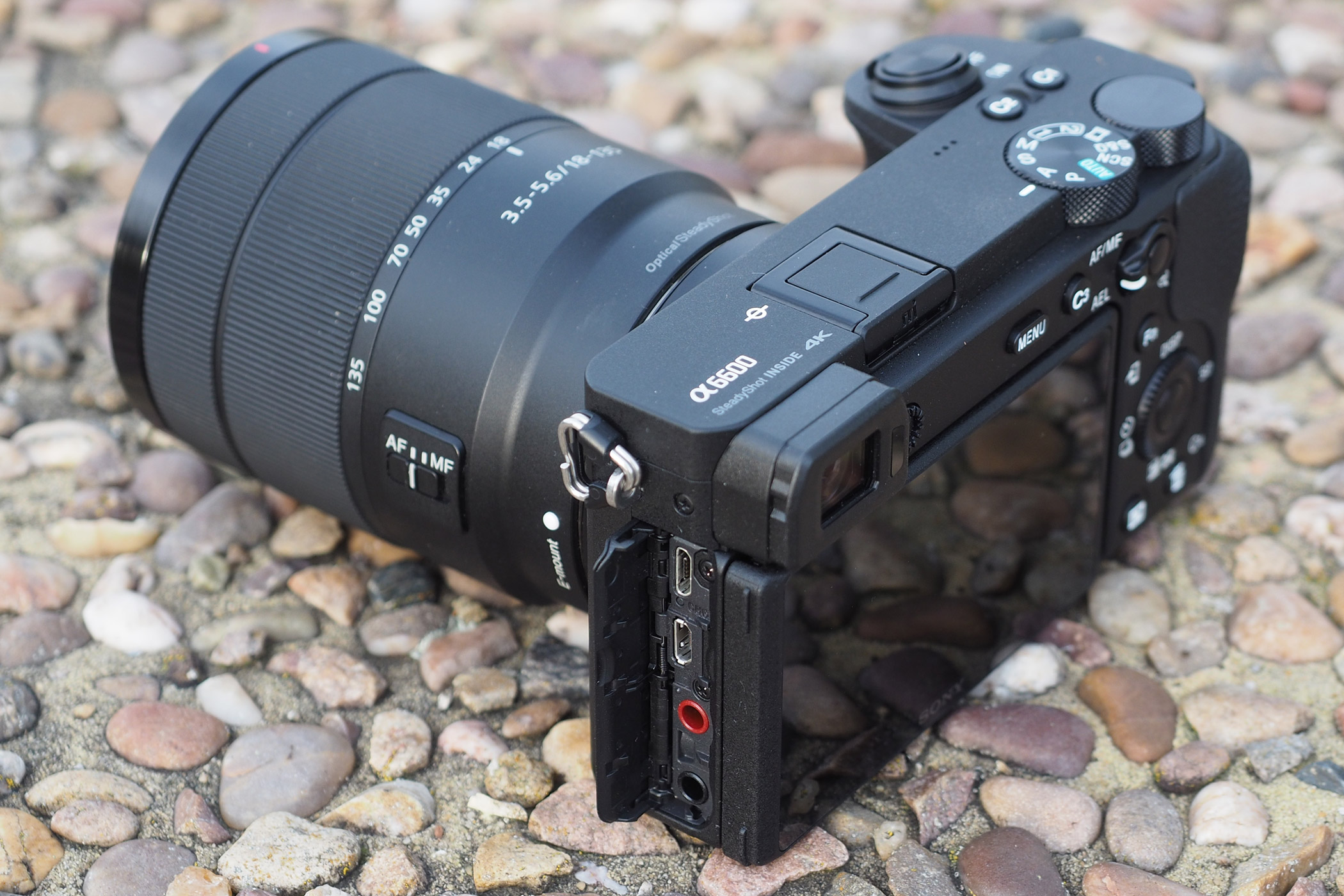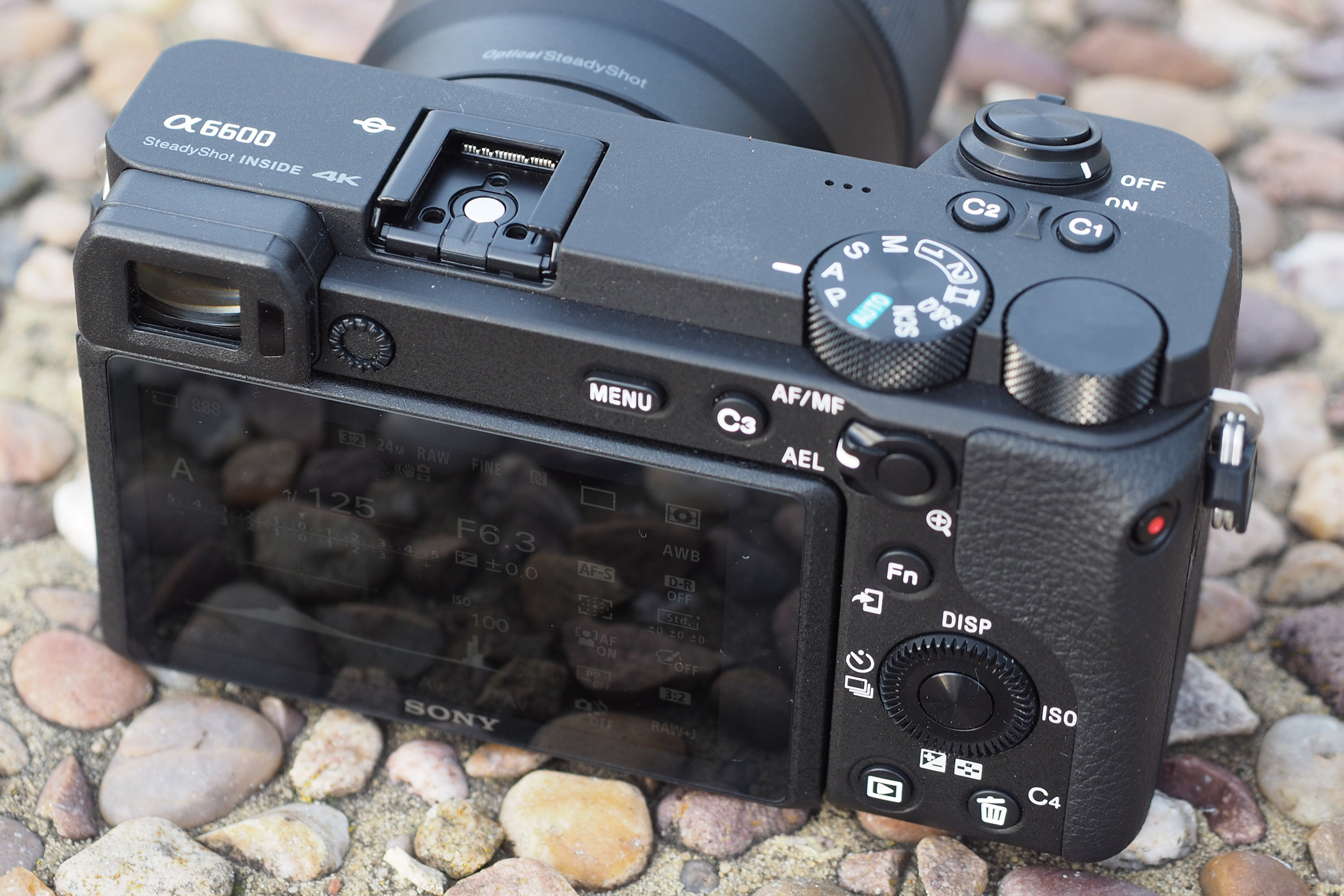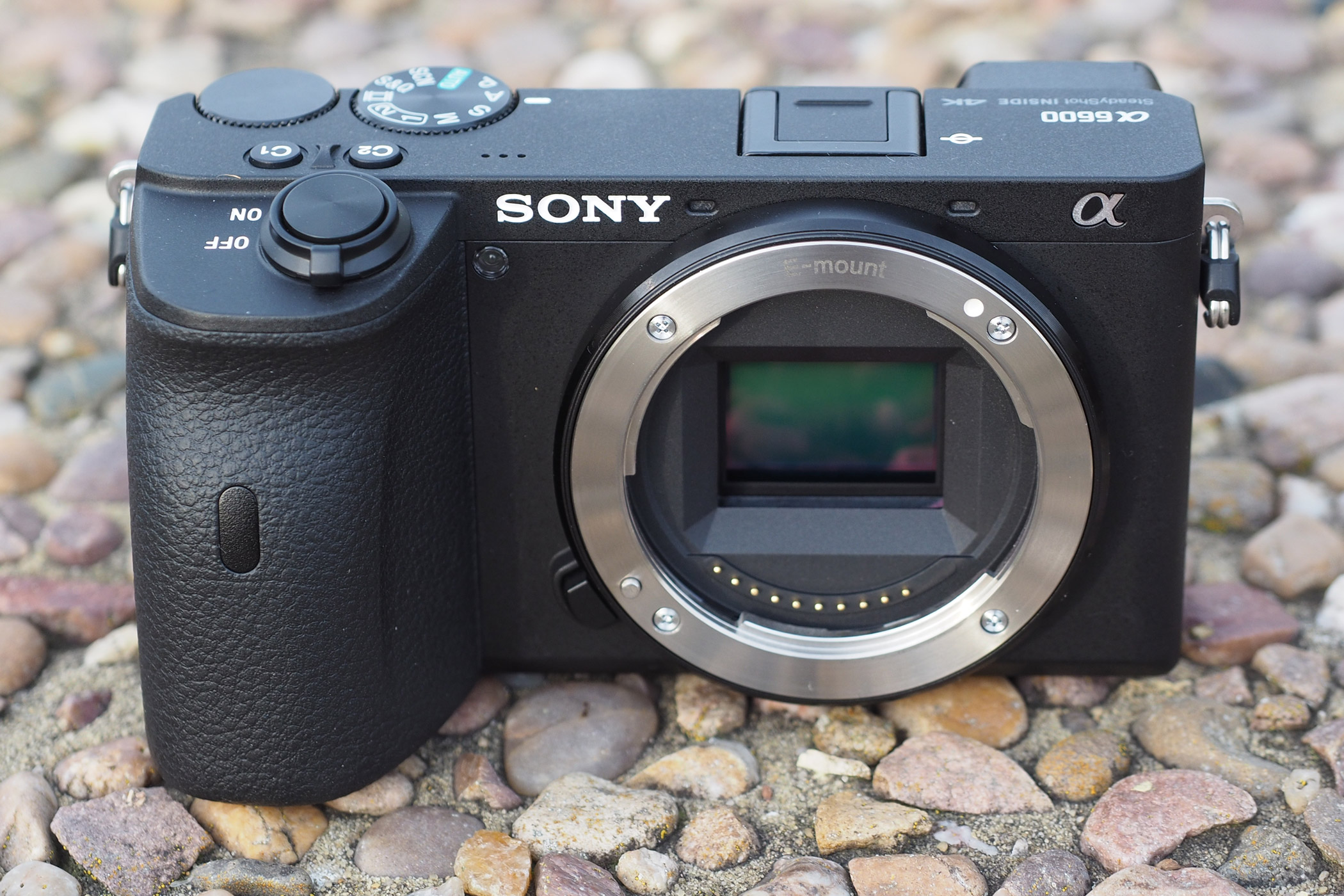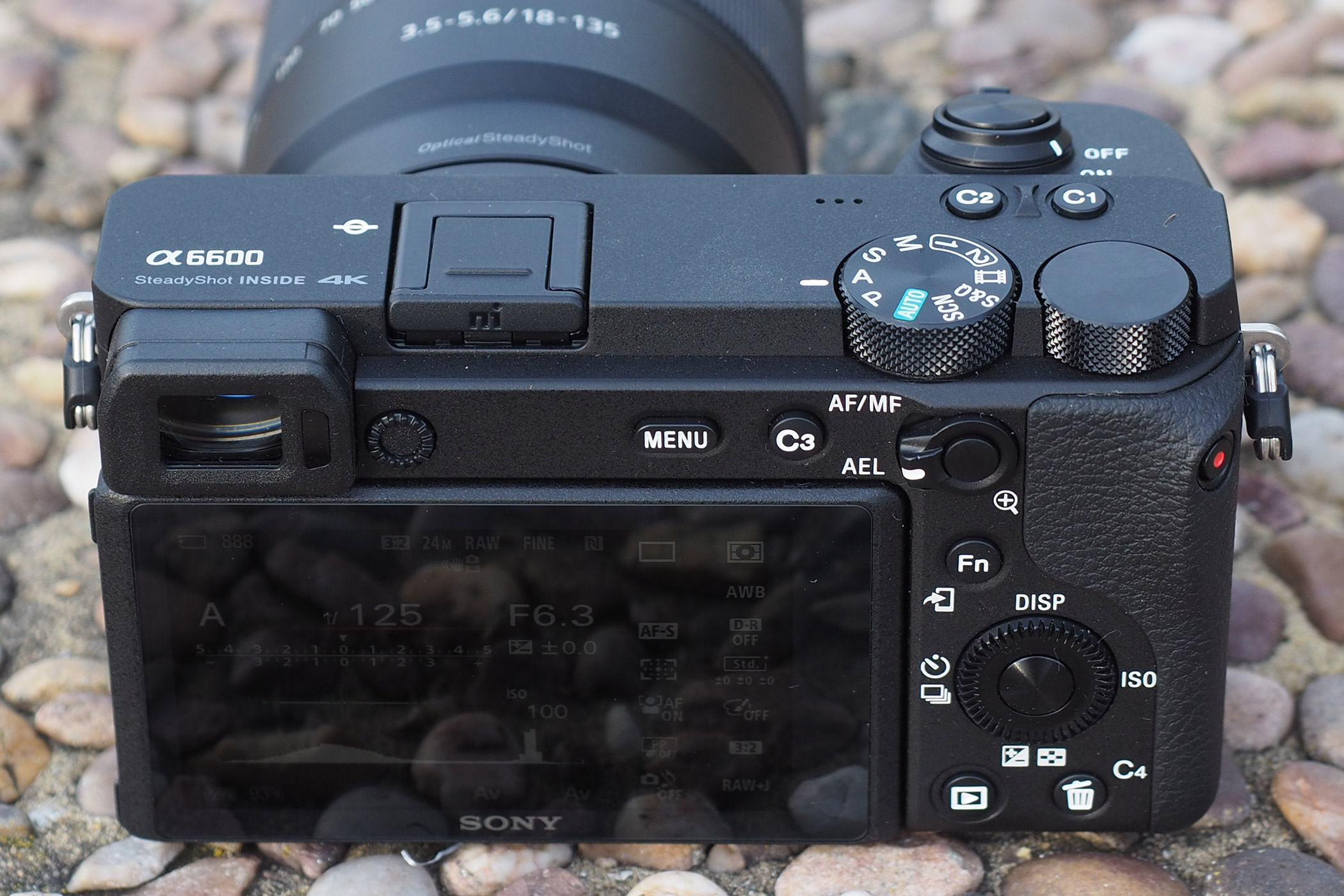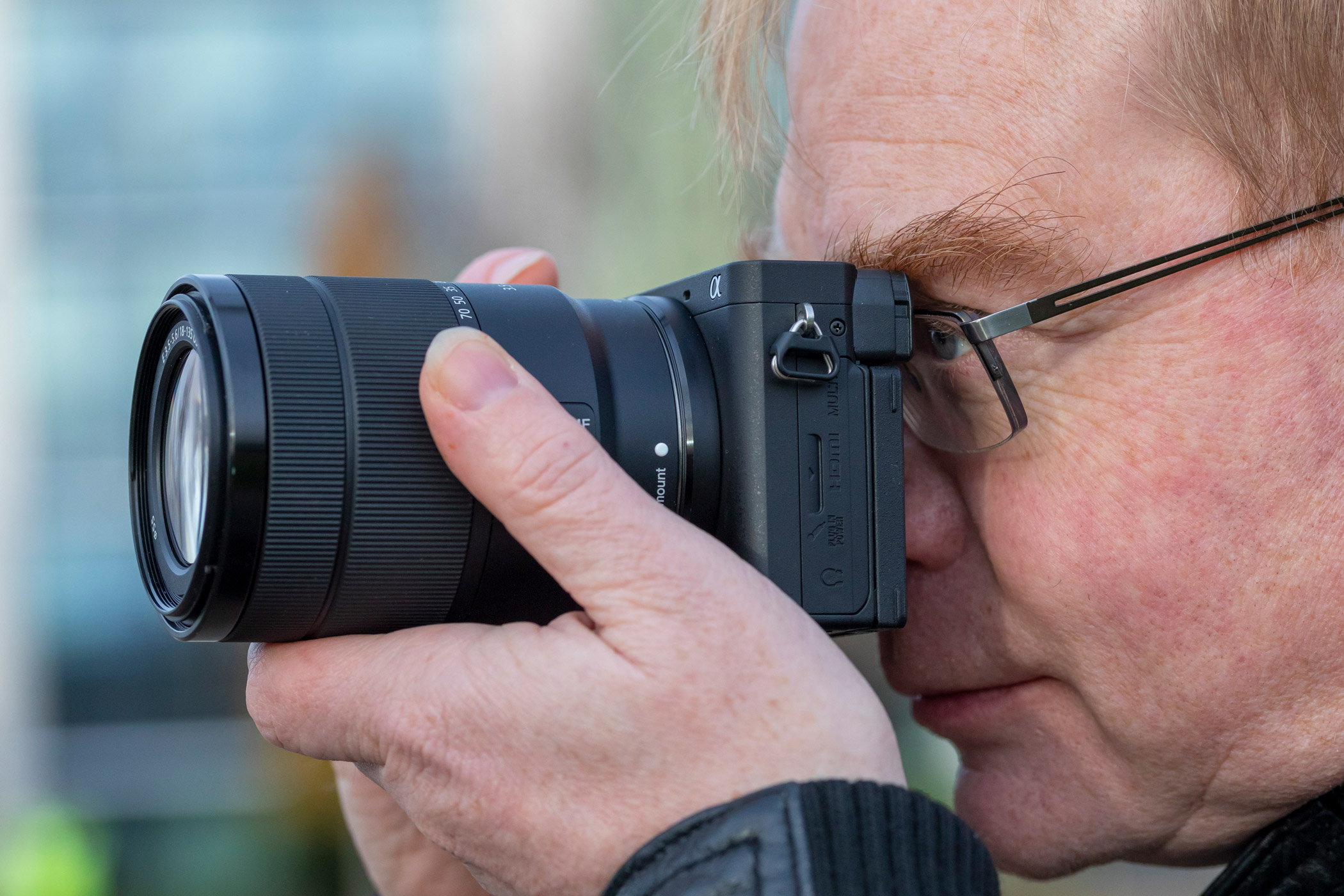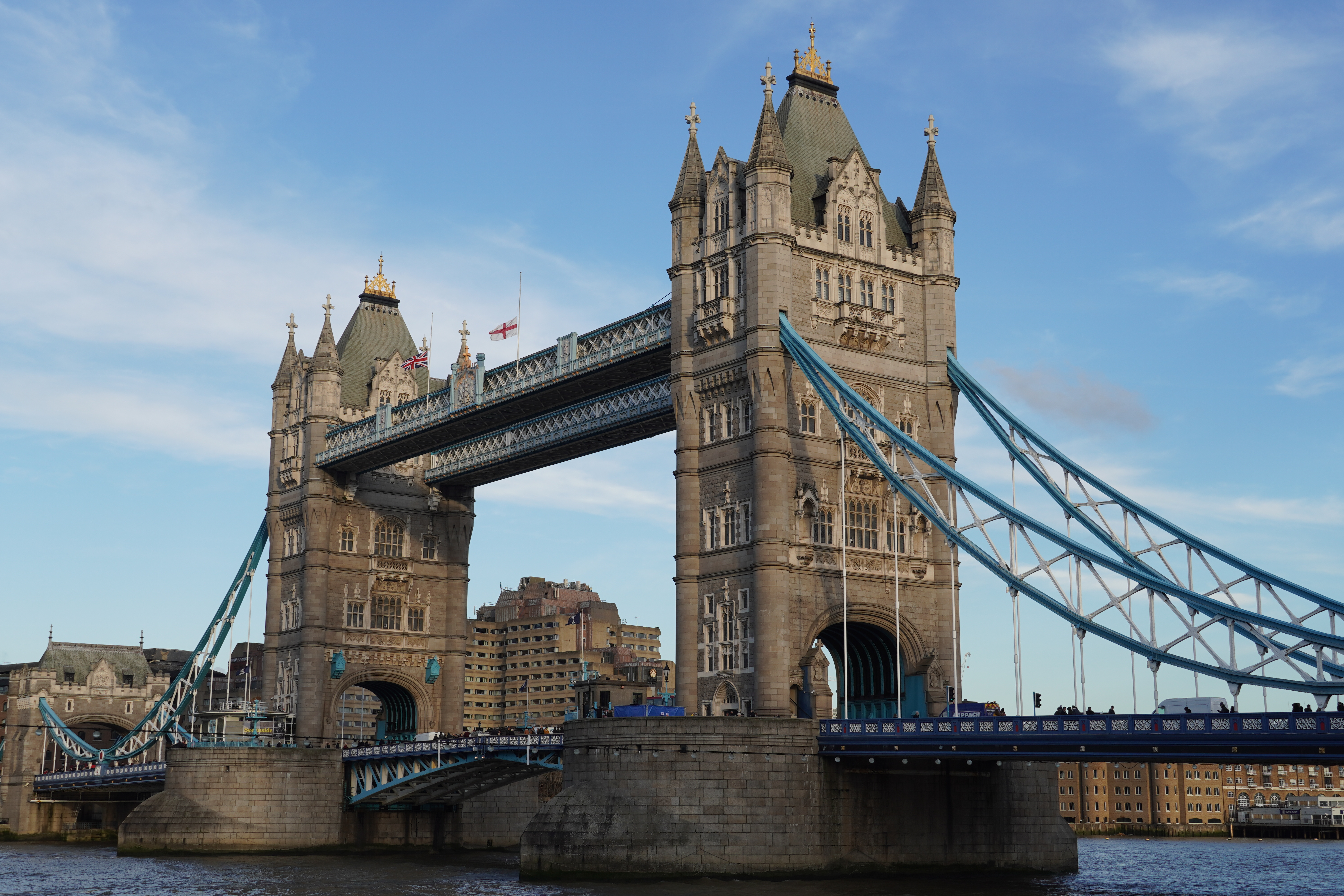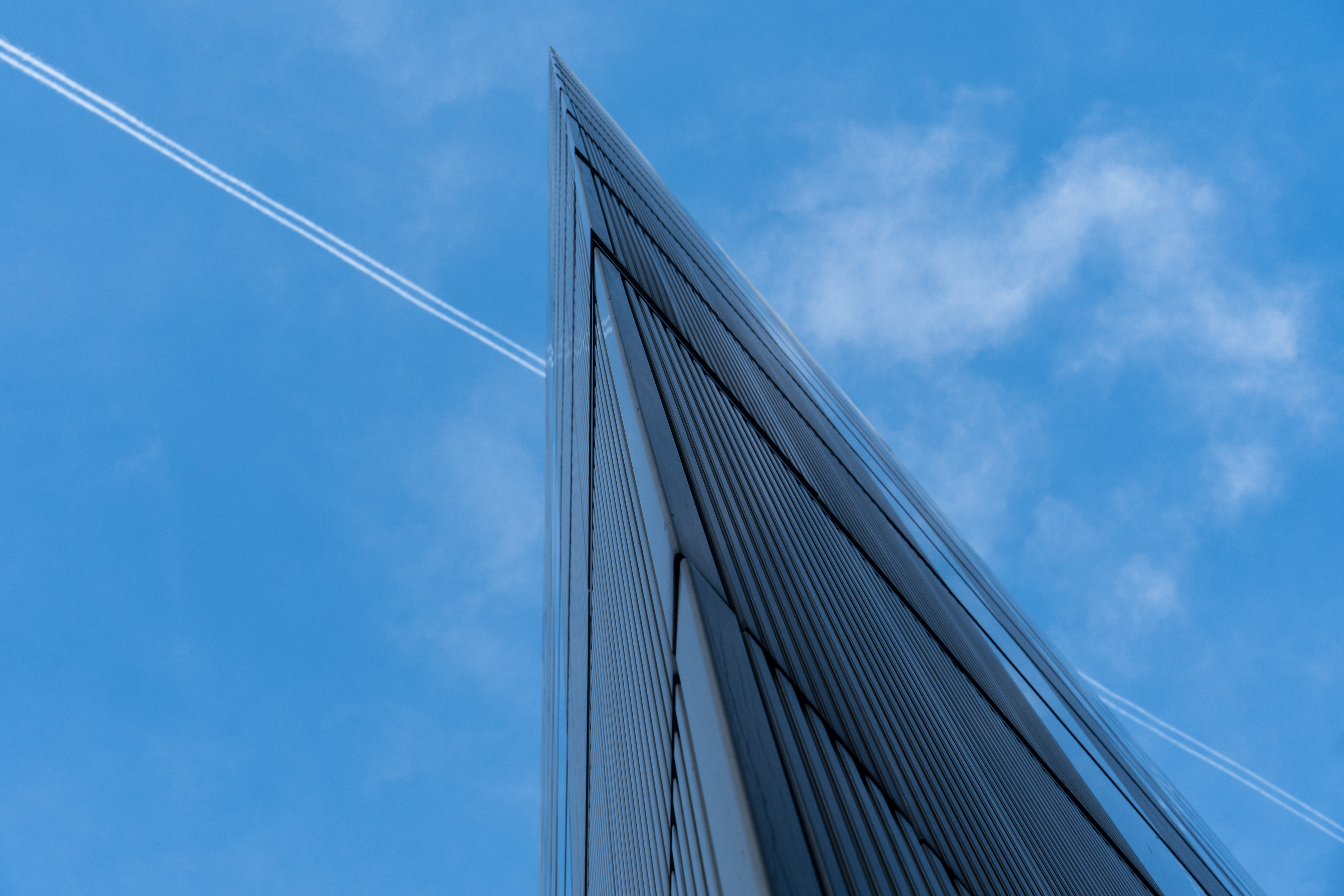Sony A6600 at a glance:
- £1450 body only
- 24.2MP APS-C sensor
- ISO 100-102,400
- 11 frames per second shooting
- 2.36m-dot electronic viewfinder
- 921k-dot 3in tilting touchscreen
- 5-axis in-body stabilisation
In August 2019, Sony revealed two new models in its Alpha 6000-series range of APS-C mirrorless cameras. The entry-level Alpha 6100 and high-end Alpha 6600 are updates to the A6000 and A6500 respectively, and gain a similar set of improvements to the intermediate A6400 earlier in the year. The headline addition is Sony’s latest AI-based autofocus, including its real-time eye AF and real-time subject tracking technology, which the firm has systematically rolled-out across its line-up during the course of 2019.
The Alpha 6600 is the new APS-C E-mount flagship, and most clearly differentiated from its lower-end siblings by the inclusion of 5-axis in-body image stabilisation (IBIS). In addition to the latest AF technology, it also benefits from the improved colour reproduction introduced on the Alpha 7 III, and uses the large Z-type battery to deliver an impressive rating of 810 shots per charge. Compared to its predecessor it gains a tilt-up selfie screen and additional levels of control customisation, but otherwise employs essentially the same body design that can ultimately be traced back to the NEX-7 of 2011.
With a launch price of £1450 body-only, or £1800 with the Sony E 18-135mm F3.5-5.6 OSS lens, the Alpha 6600 is one of the costliest APS-C cameras on the market. Indeed it’s considerably more expensive than the sublime Fujifilm X-T3 (£1179 body-only), and only surpassed among mainstream models by Nikon’s superb D500 flagship DSLR, and Fujifilm’s new rangefinder-style X-Pro3, which are £1500 and £1700 respectively (body-only). But while it more than holds its own in terms of technology and image quality, its out-dated body design means that handling and usability suffer hugely in comparison.
Sony Alpha 6600: Features
Perhaps surprisingly, given the latest 32.5MP and 26.1MP models from Canon and Fujifilm, Sony has left the sensor unchanged at 24.2MP, although the top standard sensitivity has increased to ISO 32,000 and is extendable to ISO 102,400. This means Sony hasn’t offered any increase in resolution in its APS-C line since the NEX-7. Presumably Sony has decided that 24MP is enough for the majority of photographers; the market has, after all, remained broadly static around this point for years. Rationally I’d have to agree, but there’s a risk that potential buyers will find the temptation of more pixels too strong to resist.
Other headline specs include 11 frames per second continuous shooting with AF and AE tracking, with a buffer of 116 shots in JPEG, or 46 in raw. Completely silent shooting using an electronic shutter is also available, at up to 8fps. Autofocus employs 425 each of phase-detection and contrast-detection AF points covering 84% of the image area, with a rapid 0.02sec acquisition time.
The A6600 is one of only a handful of APS-C cameras to include in-body stabilisation for combating camera shake, which is slightly surprising given its prevalence in Micro Four Thirds and full-frame mirrorless models. Aside from the A6500, it’s also found in the much larger Fujifilm X-H1, along with Sony’s Alpha-mount cameras and Pentax DSLRs. The A6600’s 5-axis system is slated to deliver up to 5 stops of benefit, and works with any lens you can mount, including those with optical stabilisation.
In terms of video, 4K recording is available at 30/24p, while Full HD can be recorded at 120p. High-end video features include Fast Hybrid Autofocus with touch tracking, HLG and Slog recording, a microphone socket for higher-quality sound, and a headphone socket for monitoring audio. Real-time Eye AF also extends to video recording, allowing easier use of fast primes when recording interviews, for example.
As usual Wi-Fi and Bluetooth are built in for connecting to a smartphone, allowing both image sharing and remote control of the camera with live view. Sony makes it particularly easy to transfer images to your phone via a single press of the Fn button during playback. But on the other hand, it does very little with Bluetooth – it’s only used if you want to geotag your images as you shoot.
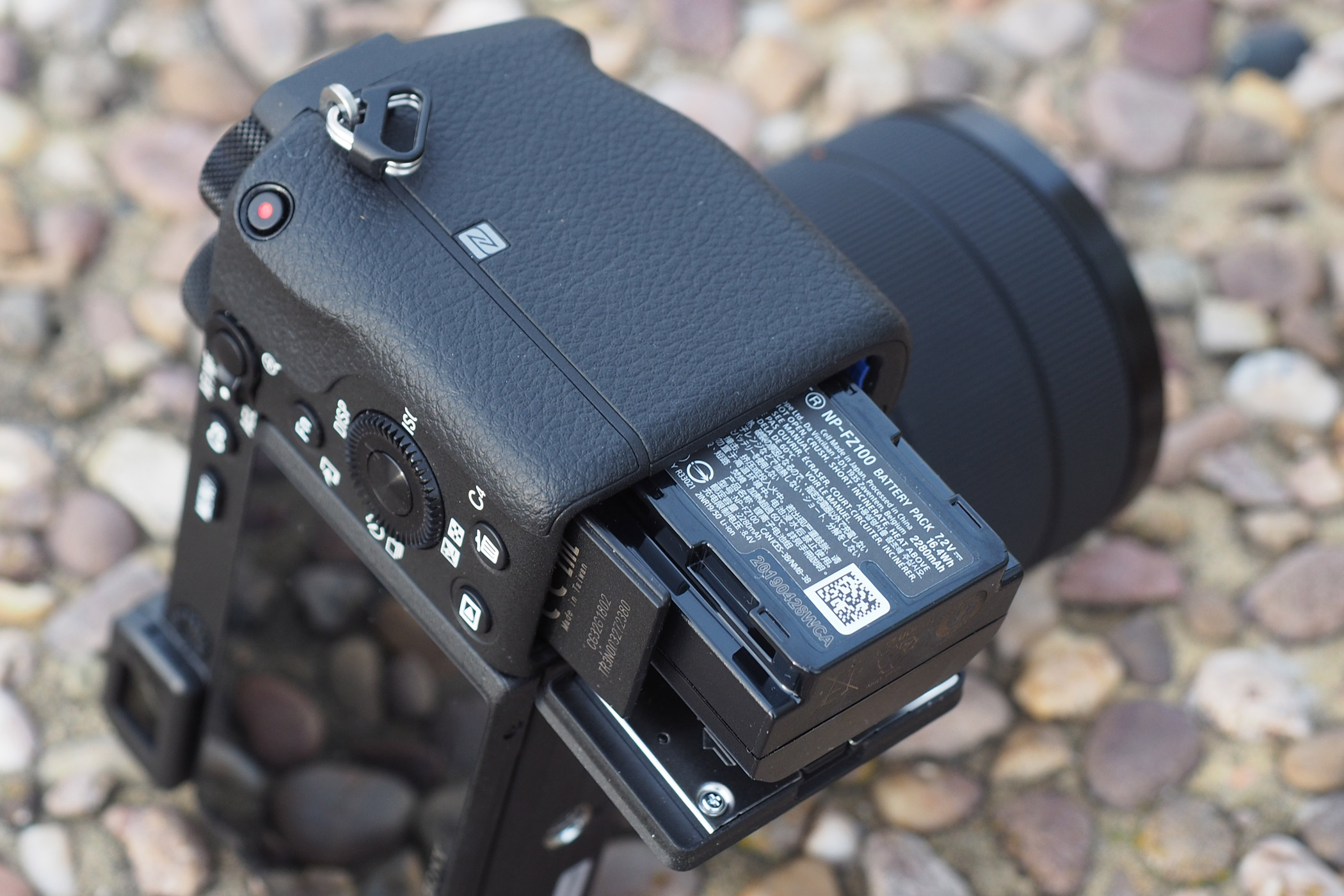
Unusually at this price, the A6600 takes just a single SD card, in the same compartment as the battery
Unfortunately, certain features that we’d expect to see are conspicuous by their absence. Sony offers only the bare minimum of touchscreen functions, so you can’t change camera settings by touch, or browse and set the main menu. Likewise, there’s still no in-camera raw conversion for adjusting your images before sharing.
You can’t even overlay electronic levels and a live histogram on the preview image at the same time; instead you have to cycle through different display screens. The A6600 has also discarded the built-in flash that’s found in other A6000-series models, relying purely on a hot shoe for external units instead. But unlike a lot of other mirrorless cameras at this level, you don’t get a small add-on unit in the box.
Sony Alpha 6600: Focal points
- There’s no built-in flash, and no add-on unit provided in the box, so the hot shoe is the only means of adding additional lighting when you need it.
- Thanks to its large NP-FZ100 battery that’s also used by Sony’s recent full-frame models, the A6600 boasts a class-leading battery life of 720 shots using the viewfinder, and 810 with the LCD. It’s topped up in-camera via USB.
- Unusually at this price point, the A6600 has only a single SD card slot, which is accessed from the same baseplate door as the battery.
- One the side, behind a neatly designed hinged door, you’ll find microphone, headphone, HDMI, and USB/remote control sockets.
- The eye sensor beside the viewfinder automatically switches between the LCD and EVF. Helpfully it’s disabled when the screen is tilted.
- A sensor on the handgrip allows use of an infrared remote control. It’s also possible to use a wired release, or a smartphone via Wi-Fi.
Sony Alpha 6600: Build and handling
In terms of design the A6600 is almost indistinguishable from the A6500, which means that it’s a relatively small, flat-bodied camera with a tilting rear screen and corner-mounted viewfinder. The control layout is practically identical too, just with an additional custom button in place of a flash release. The handgrip has been deepened to accommodate the larger battery, which is a definite improvement, but it’s still not very tall and I sometimes found my little finger slipping off the base.
There’s little to complain about in terms of build quality. The body shell is constructed from magnesium alloy and benefits from dust- and splash-proofing, which is always reassuring. But it’s worth bearing in mind that Sony’s only similarly-sealed APS-C lenses are the E 16-55mm F2.8 G and E 70-350mm F4.5-6.3 G OSS, which were announced alongside the camera and cost £1199 and £829 respectively. Many of the firm’s premium full-frame lenses are also sealed, but they’re disproportionately large and heavy for the small APS-C body. If you want a sealed wideangle zoom for landscape work, too bad.
The biggest problem with the A6600, however, is its control layout, and especially how it’s set up when you take it out of the box. The camera sports dual control dials, but they’re arranged such that both are controlled using your thumb, rather than one being operated by your forefinger, which slows down operation. What’s more, by default both dials do the same thing except in manual mode, which rather misses the point of having both in the first place.
The rear dial doubles as a d-pad, which in turn doubles-up its functions between selecting the autofocus point and changing the ISO, exposure compensation, drive mode and display mode, with a press of its centre button cycling between modes. It’s all a confusing mess that’s heavily reliant on a lot of thumb contortion and button pressing.
Thankfully, the handling can be improved substantially by making use of Sony’s extensive customisation options. For instance, you can set one of the dials to change exposure compensation directly, without having to press the down key first. In addition, the My Dial setting allows you to temporarily change the function of the dials by pressing a button, and I used this to assign ISO and white balance to the C1 button. Unfortunately, it has the same flaw as on the A6400, in that it doesn’t tell you what it’s doing when you’re shooting with the viewfinder, rendering what should be a valuable feature unnecessarily difficult to use.
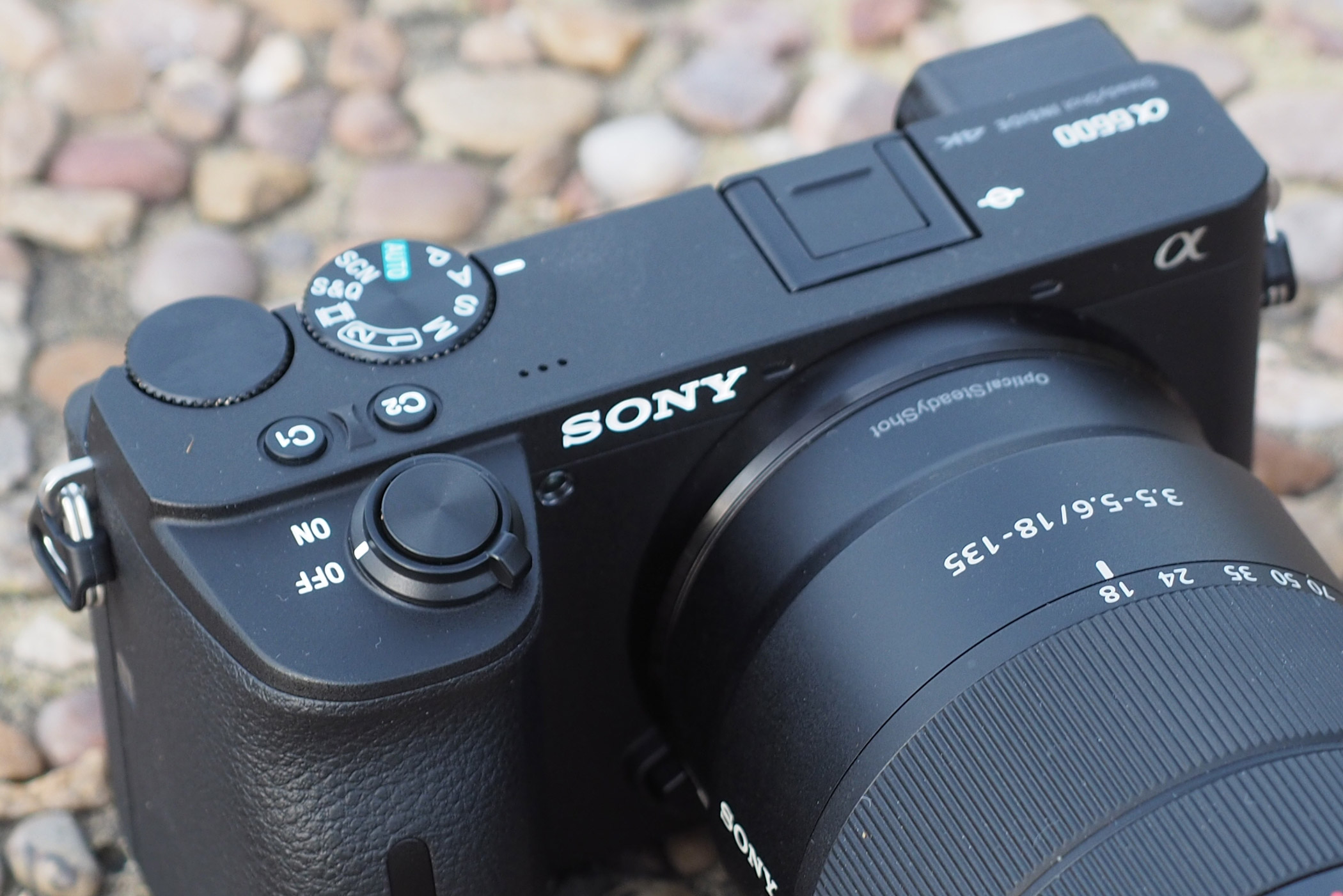
There’s no front dial, so only the power switch, shutter, C1 and C2 buttons are operated by your forefinger
Secondary functions are made easy to access via the neatly laid out onscreen Fn menu, which is also user configurable and well worth setting up to your personal preferences. However unlike most other brands, it’s not integrated into the touchscreen interface. There’s also a My Menu tab, which allows you to gather together your most-used options from the enormous and poorly organised main menu, that now runs to 176 settings across 35 tabs. Unfortunately you can’t add items directly to it when you have them selected; instead you have to find them all over again in an separate duplicate list, which actively discourages you from setting it up (to be fair, Sony isn’t alone in doing this).
Once I got the A6600 set up as best I could, I found it tolerable, but no better than that. For a camera aimed at enthusiasts that costs £1450, it’s not really up to scratch. All of its competitors are more pleasant to use, and if you actually want to enjoy the process of taking pictures, something like the Fujifilm X-T3 would be a far better choice.
Sony Alpha 6600: Viewfinder and screen
Unlike most cameras at this level, which tend to use SLR-shaped designs with central viewfinders, the Alpha 6600 has a corner-mounted EVF. It’s large and clear, but has a much smaller surround compared to those on SLR-style models, which means it can be overwhelmed by glare in bright light. It therefore benefits greatly from using the deep rubber eyecup that’s supplied in the box.
A far bigger problem, however, is that the live view feed is too low in resolution and includes a lot of image artefacts such as false colour and ‘jaggies’ on diagonal lines. How visible these are depends greatly on the subject, for instance you may not see much untoward when shooting portraits. But for subjects with straight lines and complex fine detail such as architecture and landscapes, they can be downright ugly.
The rear LCD is a 3in unit that can tilt downwards almost flat for overhead shooting, or upwards for use as a waist-level finder, and ultimately forwards over the top of the camera for selfies and vlogging. However, it lacks any further articulation for shooting in portrait format. As with the A6400, the screen will also be blocked if you mount a microphone or flash on the hot shoe. The other catch is its 16:9 aspect ratio, which results in a tiny image when shooting or reviewing stills, akin to a 2.6in display. Again, this is a massive letdown for a £1450 camera.
Sony Alpha 6600: Autofocus
For Sony, 2019 was all about rolling out its latest autofocus technology, and ultimately this is the most compelling reason for buying the A6600. It has an uncanny ability to lock onto and track moving subjects, which can be invaluable if you spend a lot of time shooting portraits, children or sports. If, on the other hand, you mostly shoot static subjects, it’s less important.

Sony’s AF has no problem at all with fast, skittish subjects. E 70-350mm f/4.5-5.6 at 244mm, 1/400sec at f/6.3, ISO 1250
There’s no denying the speed, responsiveness and accuracy of the A6600’s AF, which is phenomenal. Instead its main problem is usability. If you like to specify the focus point manually, the easiest way is using the touchscreen. Unfortunately though, it’s too laggy and imprecise for my liking when shooting with the viewfinder. But the physical controls aren’t much better; not only does the A6600 lack a joystick, it’s impossible to dedicate the d-pad to the task; instead pressing the centre button toggles focus area selection on and off, and it’s easy to find yourself in the wrong mode. The focus point is also drawn in a mid-grey tone that’s really difficult to see, and can’t be changed to a different colour as on Sony’s other recent cameras. It’s not entirely unusable, but it’s really not very good.

Face detection is capable of picking up subjects even when they’re small in the frame, and in very low light. Samyang 35mm f/2.8, 1/30sec at f/2.8, ISO 6400.
One way around this is to use the tracking mode, which works for static subjects as well as moving ones. You first need to set the camera to AF-C, at which point you can enable tracking by scrolling to the end of the focus-area mode selection menu. At this point, it’s all-too-easy to miss that you again have a choice of all the same focus-area modes, but now selected using the left and right keys rather than the rear dial (it would make more sense if tracking were another autofocus mode, alongside AF-S and AF-C). Set the AF area to centre, lock focus on the subject and recompose, and the focus point will adjust its position appropriately. It’s like the old focus-and-recompose trick, but with the advantage that the camera continually keeps the subject in correct focus.

Tracking AF keeps moving subjects pin-sharp. 70-350mm f/4.5-6.3 at 350mm, 1/1000sec at f/6.3, ISO 3200
However it’s when shooting moving subjects that tracking really comes into its own. It’s often best to select one of the wider AF area modes, rather than a single fine point, to give the camera the best chance of locking onto the subject. But once acquired, it’ll keep track of it almost magically as it moves around the frame. With humans or animals, the camera will switch automatically between object tracking, face detection and eye detection, to ensure the best focus. No other firm’s AF can quite match it; however most aren’t that far behind.
Sony Alpha 6600: Performance
While the A6600 generally works very well, it isn’t always quite the snappy performer we’d hope for at the price. It starts up quickly enough, and responds to button presses instantly, but it doesn’t always keep up with control dial movements. So if you quickly rotate three clicks to make a one-stop adjustment in shutter speed or aperture, for example, sometimes it only registers two of them. The mechanical shutter is also louder than those of its competitors. These are small flaws in the grand scheme of things, but they make the A6600 feel less refined than it should be.

The 18-135mm kit zoom is a nicely versatile lens. Sony E 18-135mm f/3.5-5.6 at 48mm, 1/80sec at f/8, ISO 400
Sony’s metering tends to be conservative, often giving JPEGs that are a little too dark for my tastes. But the advantage of this approach is that it’s less likely to clip highlight detail, which is a real advantage for raw shooters. Auto white balance also errs towards the cool side, struggling to capture the golden glow of late afternoon sunlight, for example.
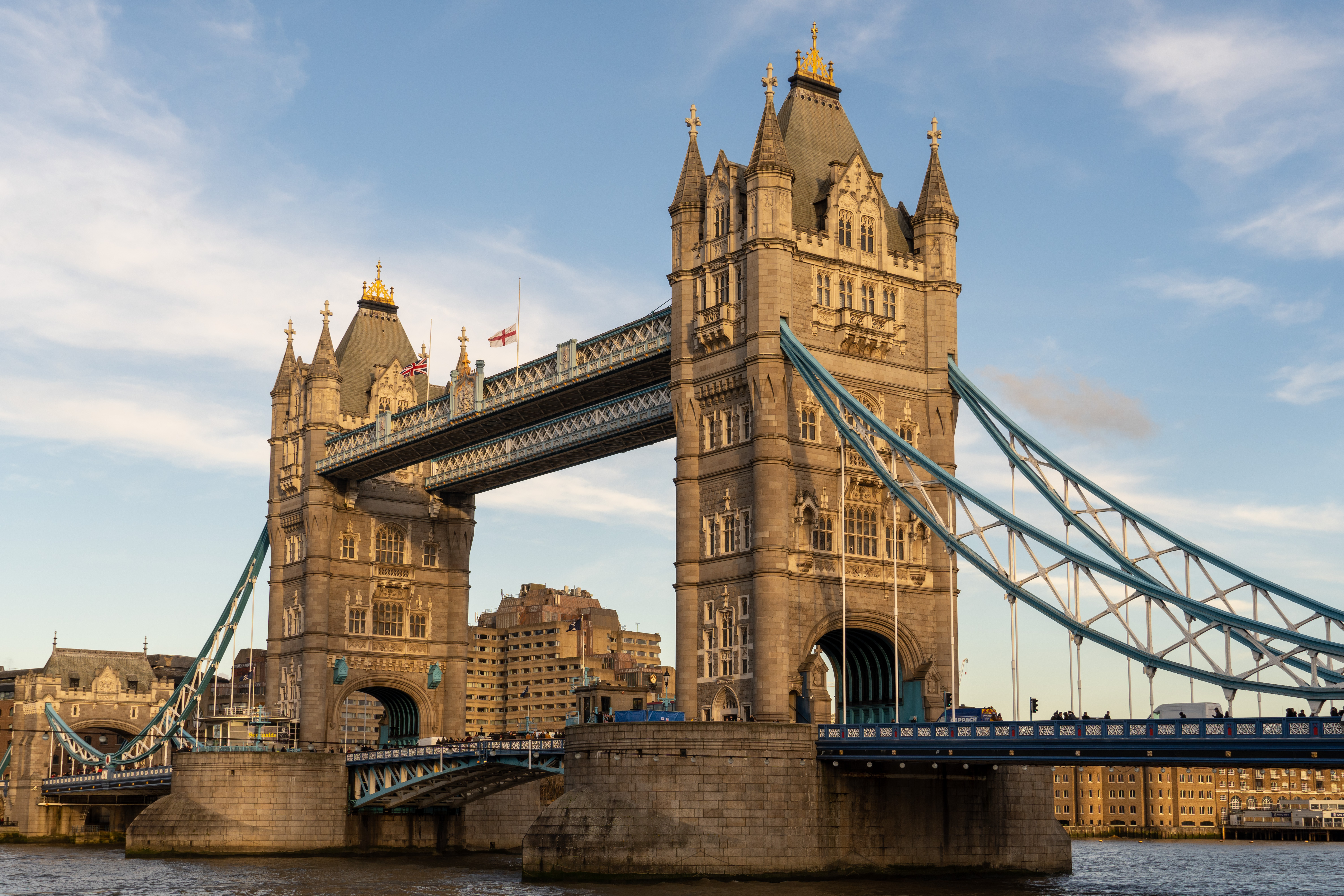
Tower Bridge in golden afternoon sunlight, developed from raw. E 18-135mm f/3.5-5.6 at 32mm, 1/125sec at f/8, ISO 100
In the example above, late afternoon winter sunlight imparted a lovely golden glow to the stonework of London’s Tower Bridge. But the corresponding JPEG shot using auto white balance looked distinctly grey and dull.
As a result, the A6600’s JPEGs generally benefit from brightening and colour adjustments using an image editor such as Snapseed before sharing, and you can invariably improve on them substantially when processing raw. Other brands such as Canon, Fujifilm and Olympus do a much better job with their in-camera processing.

IBIS helps with hand-held low-light shooting. E 18-135mm f/3.5-5.6 at 25mm, 1/4sec at f/5.6, ISO 400
In-body stabilisation is a good reason to buy any camera, and the A6600 makes a decent case for itself. Using the Samyang 35mm f/2.8, I was able to get consistently sharp shots hand-held at 1/8sec, which equates to about 3 stops benefit, while with the 18-135mm kit zoom at wideangle I was able to shoot as low as 1/4sec. This is a solid enough showing and well worth having, if not as ludicrously effective as Olympus’s IBIS system in its OM-D E-M5 III.

Image quality remains very impressive up to ISO 1600 or more. E 18-135mm f/3.5-6.3 at 120mm, 1/200sec at f/8, ISO 2000
Special mention has to be made of the A6600’s battery life, which for a mirrorless camera is outstanding. I suspect most users could easily get through a day’s intensive shooting without needing a spare.
Sony Alpha 6600: Image quality
With its 24MP APS-C sensor, the A6600 is capable of delivering excellent image quality. It may not match the sheer level of detail that its higher-resolution peers can record, but it’s still more than good enough for a critically sharp A3+ print.

The A6600 is capable of excellent image quality from raw files. E 10-24mm f/4 at 14mm, 1/200 sec at f/11, ISO 100
Noise is kept impressively under control, with sensitivities up to ISO 1600 eminently usable, and ISO 12,800 quite acceptable at small output sizes. There’s also plenty of extra shadow detail that can be pulled out when processing raw files. This is a sensor that positively shines in raw, compared to the camera’s slightly lacklustre JPEGs.
Sony Alpha 6600: Resolution
At ISO 100 the A6600 delivers exactly as much resolution as we expect from this sensor, giving clean detail to at least 3800 l/ph, but with false colour and aliasing visible at higher frequencies due to the lack of a low-pass filter. Initially resolution drops only slowly as the sensitivity is raised, with 3600 l/ph recorded at ISO 1600. Noise has an ever-increasing impact beyond this, but even so about 3200 l/ph is still achieved at ISO 12,800. However the higher ISO settings deteriorate very rapidly, with no more than 2,000 l/ph at 102,400.
In the 100% crops below, taken from our resolution chart tests, multiply the numbers beneath the line to calculate the resolution in line pairs per picture height. The black triangles indicate our assessment of the resolution at each ISO setting.

Sony Alpha 6600, resolution, ISO 50, Raw + Adobe Camera Raw

Sony Alpha 6600, resolution, ISO 100, Raw + Adobe Camera Raw
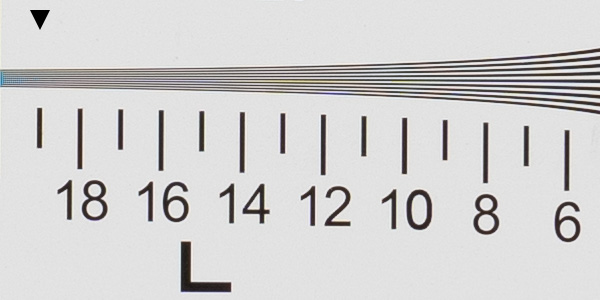
Sony Alpha 6600, resolution, ISO 200, Raw + Adobe Camera Raw
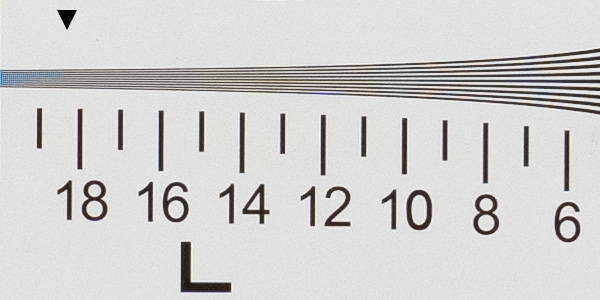
Sony Alpha 6600, resolution, ISO 800, Raw + Adobe Camera Raw
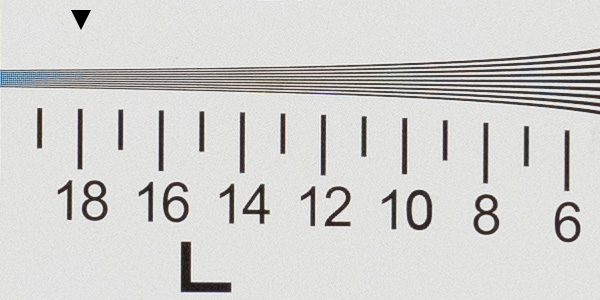
Sony Alpha 6600, resolution, ISO 1600, Raw + Adobe Camera Raw
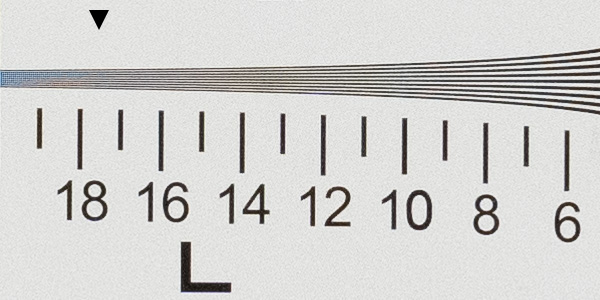
Sony Alpha 6600, resolution, ISO 3200, Raw + Adobe Camera Raw

Sony Alpha 6600, resolution, ISO 6400, Raw + Adobe Camera Raw
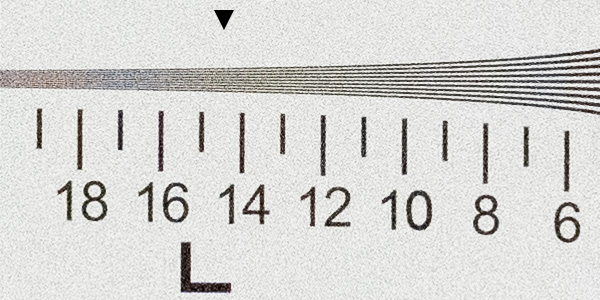
Sony Alpha 25600, resolution, ISO 50, Raw + Adobe Camera Raw
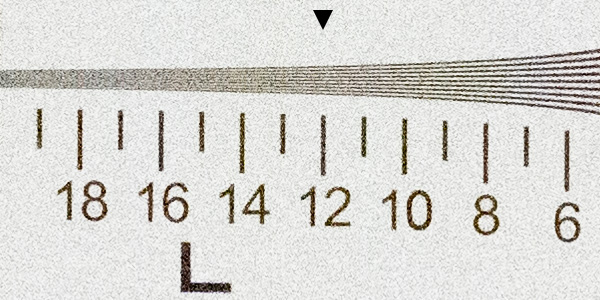
Sony Alpha 6600, resolution, ISO 51200, Raw + Adobe Camera Raw
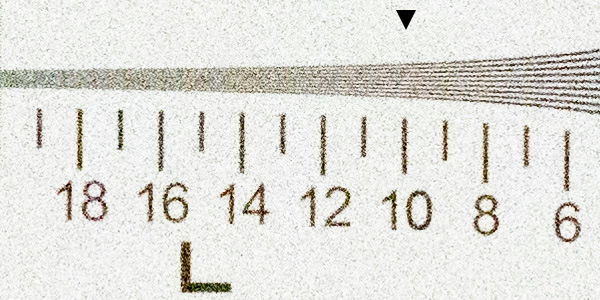
Sony Alpha 6600, resolution, ISO 102400, Raw + Adobe Camera Raw
Sony Alpha 6600: ISO and Noise
At low ISOs the A6600 delivers detailed images with barely any hint of noise. There’s also very little decrease in quality at sensitivities up to ISO 800, and certainly nothing you’d readily notice in print. At higher settings there’s some impact on image quality when viewing files onscreen, with luminance noise clearly appearing in even-toned regions, but even so, I’d happily shoot at ISO 1600 and 3200.
By ISO 6400 there’s an obvious deterioration in fine detail and colour, but I’d still quite happily use this setting for smaller output sizes, with a touch of noise reduction applied in raw processing. Above this though, the impact of noise becomes increasingly severe, and I’d steer clear of using ISO 25,600 and higher.

Sony Alpha 6600, detail and noise, ISO 50, Raw + Adobe Camera Raw
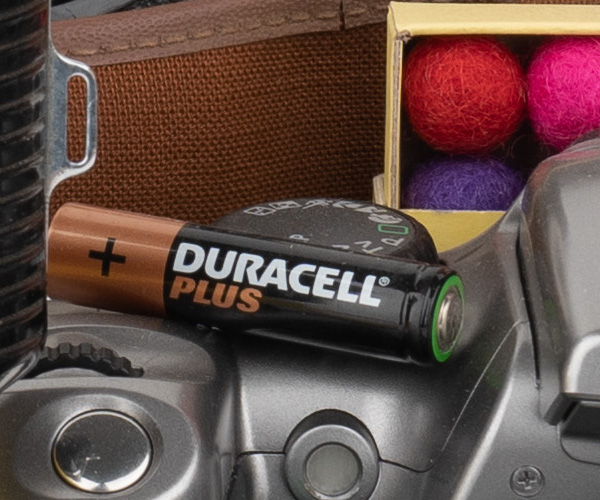
Sony Alpha 6600, detail and noise, ISO 100, Raw + Adobe Camera Raw
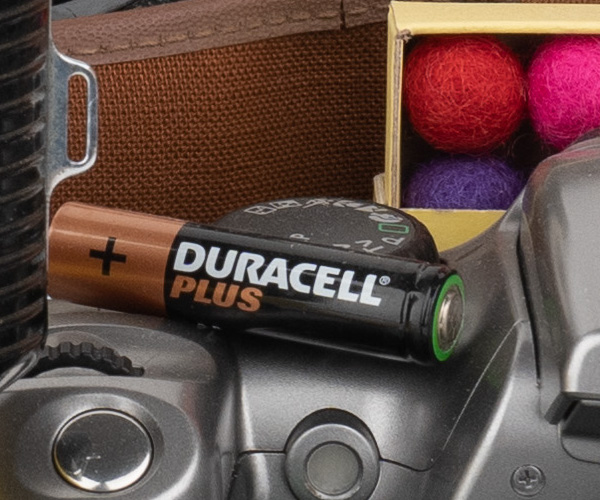
Sony Alpha 6600, detail and noise, ISO 200, Raw + Adobe Camera Raw

Sony Alpha 6600, detail and noise, ISO 400, Raw + Adobe Camera Raw
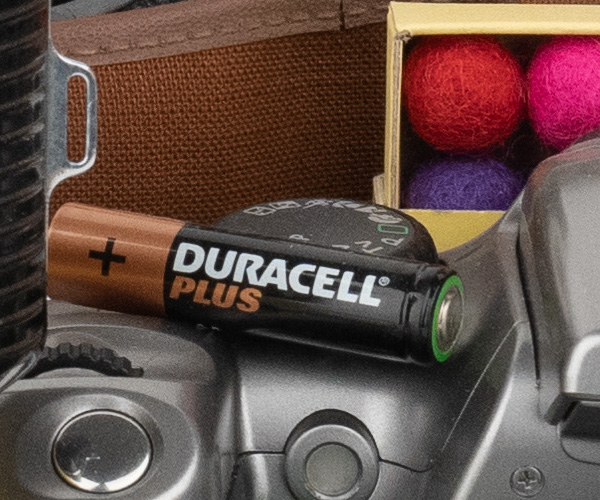
Sony Alpha 6600, detail and noise, ISO 800, Raw + Adobe Camera Raw
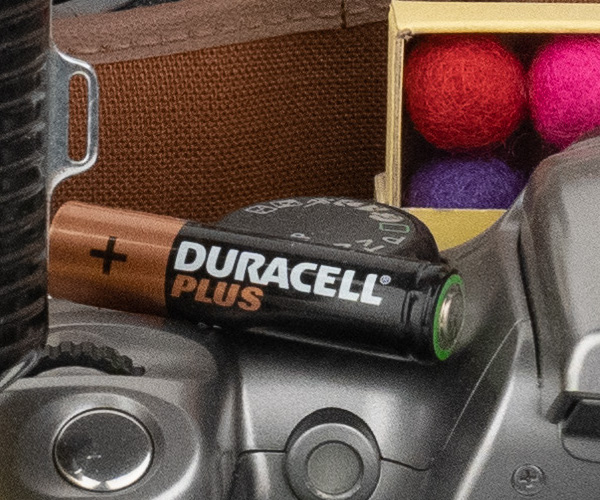
Sony Alpha 6600, detail and noise, ISO 1600, Raw + Adobe Camera Raw

Sony Alpha 6600, detail and noise, ISO 3200, Raw + Adobe Camera Raw
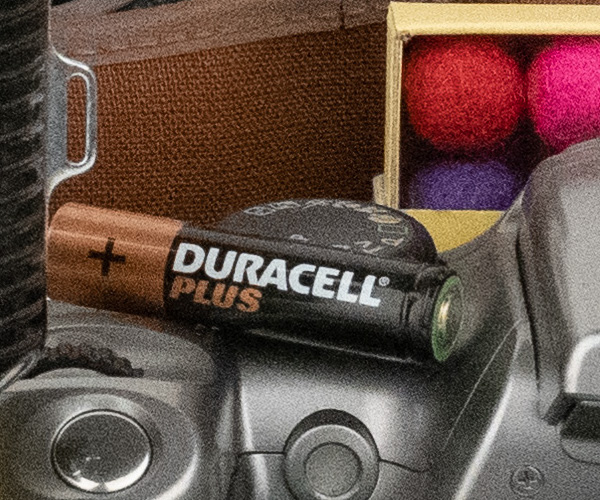
Sony Alpha 6600, detail and noise, ISO 6400, Raw + Adobe Camera Raw

Sony Alpha 6600, detail and noise, ISO 12800, Raw + Adobe Camera Raw
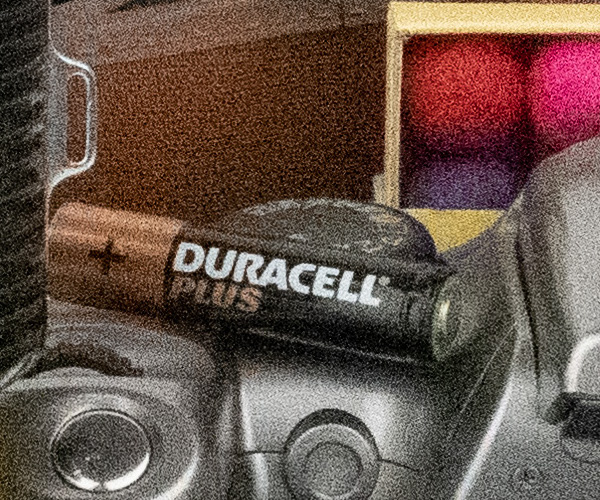
Sony Alpha 6600, detail and noise, ISO 25600, Raw + Adobe Camera Raw
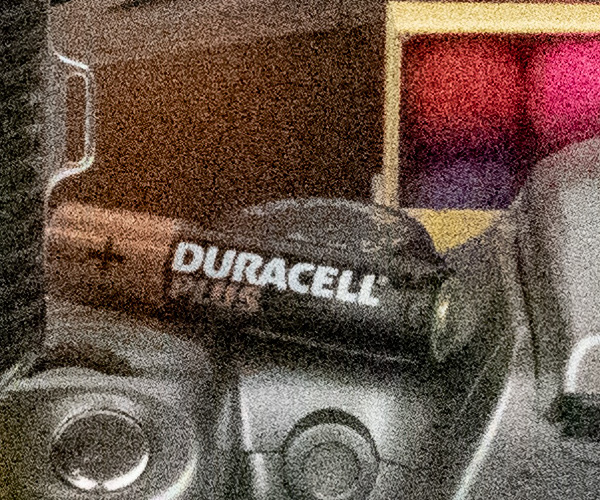
Sony Alpha 6600, detail and noise, ISO 51200, Raw + Adobe Camera Raw

Sony Alpha 6600, detail and noise, ISO 102400, Raw + Adobe Camera Raw
Sony Alpha 6600: Verdict
On the face of it, Sony has ticked all the boxes with the Alpha 6600. It’s small, fast, weather-sealed, and includes in-body stabilisation. Its autofocus capability is unreal, the battery lasts for ages, and it delivers great image quality in raw. This should be a class-leading camera.

The problem, though, is that all this brilliant technology is trapped inside a body design that’s well past its sell-by date, and riddled with flaws. The substandard control setup means it veers between uninspiring and infuriating to use, the rear LCD shows tiny images, and the viewfinder feed is too low in resolution. It’s a shame Sony hasn’t made the effort to refine its APS-C cameras in the way it’s continually evolving its full-frame line-up.
As a result, the A6600 falls short of expectations for a £1449 model aimed at serious enthusiasts. Particularly as it’s up against such strong competition: most obviously, the Fujifilm X-T3 is considerably more engaging to shoot with and produces much more attractive images, while costing a couple of hundred pounds less. Equally, if you don’t need IBIS and huge battery life, the A6400 offers the same image quality and AF for about £500 less, and that difference will buy you a nice lens.
Ultimately, if you frequently need to track erratically-moving subjects, and shoot a lot hand-held in low light, the A6600 might be a good choice. But if you feel a camera should primarily be a creative tool that facilitates your photographic vision and inspires you to pick it up and shoot, it leaves much to be desired.

Sony Alpha 6600: Specifications
